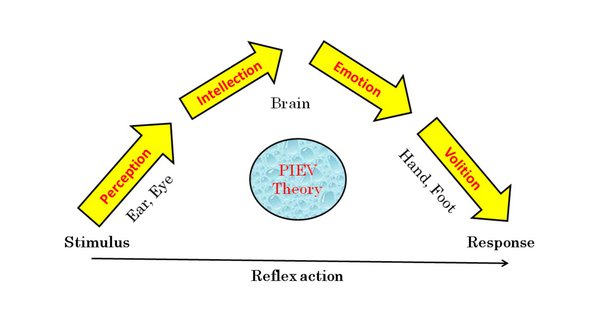PIEV Theory
According to PIEV theory, the total reaction time of the driver is split into 4 parts, viz.
- Perception time
- Intellection time
- Emotion time
- Volition time

1. Perception time
When you see the obstacle or hear some undesirable sounds, your eyes or ears send sensations to the brain through the nervous system and spinal chord. The time taken by your eyes or ears to send the sensation to the brain is called perception time.
2. Intellection time (Identification)
It is the time required for understanding the situation. It is also the time required for comparing the different thought, regrouping and registering new sensations.
Intellection is the forming of new thoughts and ideas.
3. Emotion time (Judgement)
Now after understanding the situation, you go through feelings of fear or anger or comfortable. The time you take to feel the emotional condition is called emotion time.
4. Volition time (Reaction)
Volition time is the time taken for the final action. The ‘will’ to take some act or produce some action is volition.
In this process the road user finally acts in accordance with his own memories, prejudices, ideals, weaknesses, desires and attitudes.

